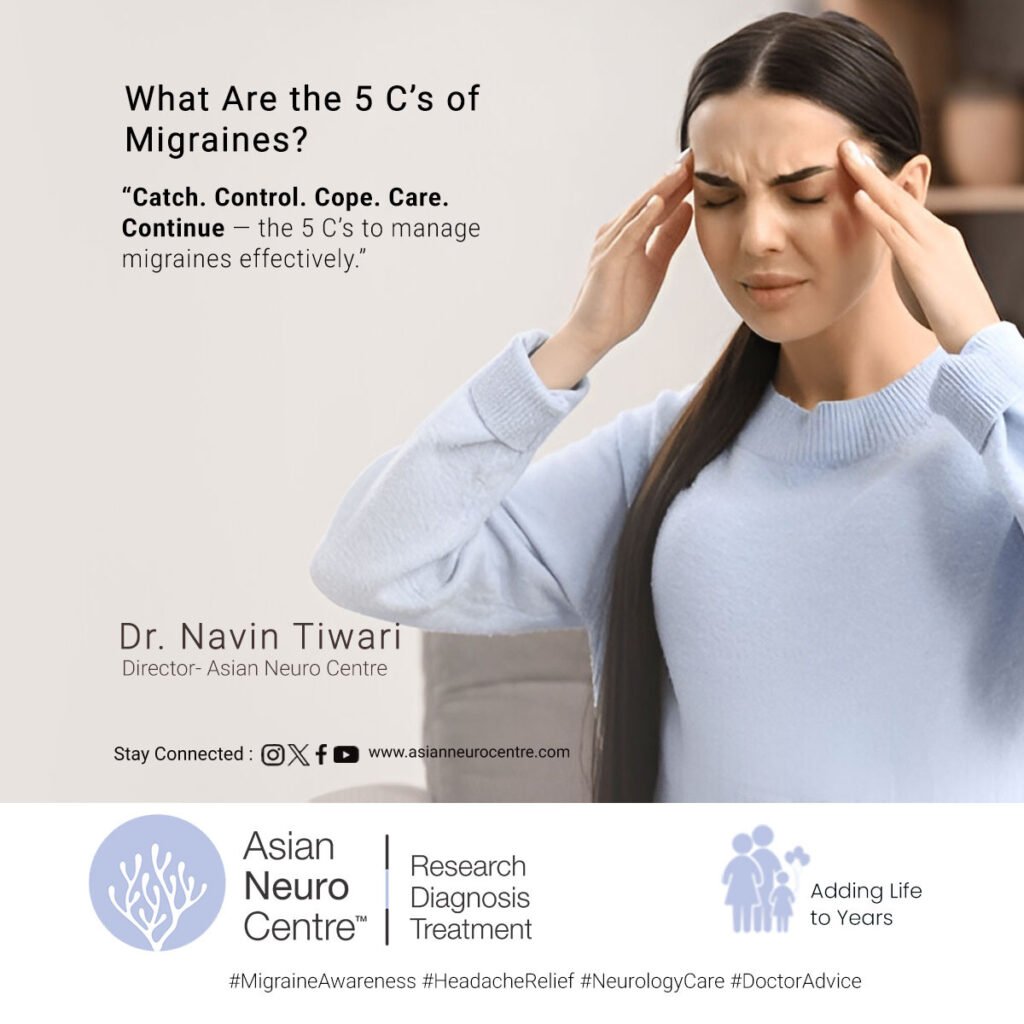- Have any questions?
- 911 12345 29
- info@asianneurocentre.com
What are the 5 C’s of Migraines?
How Long Do People Live with Parkinson’s Diagnosis?
October 6, 2025What is the Biggest Trigger for Migraines?
October 24, 2025What are Migraines
Migraines are more than just bad headaches; they’re a complex neurological condition characterized by intense, recurring pain, often accompanied by other debilitating symptoms like nausea, vomiting, and extreme sensitivity to light and sound.
These episodes can last for hours or even days, significantly impacting a person’s quality of life. Understanding the various facets of a migraine is crucial for effective management and treatment.
While there are many ways to categorize symptoms, a helpful framework for both patients and healthcare providers is often referred to as the 5 C’s of migraines.

What are the 5 C’s of Migraines?
The “5 C’s” is a mnemonic device used to help recall the main characteristics or key features associated with a typical migraine attack.
- Change: This refers to the change in sensation or feeling that often precedes the headache phase, known as the prodrome (or pre-headache phase). This can include mood changes, fatigue, food cravings, or neck stiffness. It also encompasses the aura—a temporary neurological symptom, often visual, like seeing flashing lights or zigzag lines, that usually occurs just before the pain.
- Cranium: This simply denotes the location of the pain, which is usually the head or cranium. Migraine pain is often unilateral (on one side of the head), though it can sometimes be felt on both sides.
- Character: This describes the nature or quality of the pain. Migraine pain is typically throbbing or pulsating, and its intensity is often moderate to severe, differentiating it from the dull ache of a tension headache.
- Cause: While the exact ’cause’ of a specific attack can be complex, this ‘C’ relates to Triggers. Identifying personal triggers—such as certain foods, stress, lack of sleep, hormonal changes, or bright lights—is a cornerstone of migraine prevention and management. Knowing your triggers helps you implement avoidance strategies.
- Comorbidities: This refers to the conditions that often co-exist with migraines. The most common comorbidities are nausea and vomiting, as well as photophobia (extreme sensitivity to light) and phonophobia (extreme sensitivity to sound). These accompanying symptoms are essential for a proper diagnosis of migraine.
When to See a Doctor
While occasional mild headaches are common, you should consult a doctor, particularly a neurologist or headache specialist, if you experience:
- Headaches that significantly interfere with your daily life.
- Sudden, severe headache (often described as “the worst headache of your life”), which could signal a medical emergency.
- A change in the pattern of your headaches.
- Headaches accompanied by fever, stiff neck, confusion, seizures, double vision, or weakness in any part of the body.
- If your current migraine treatment is no longer effective.
Conclusion
Understanding the 5 C’s—Change (prodrome/aura), Cranium (location), Character (throbbing pain), Cause (triggers), and Comorbidities (accompanying symptoms)—provides a concise way to grasp the key elements of a migraine.
By recognizing these characteristics, patients can better communicate their symptoms to healthcare professionals, leading to a more accurate diagnosis and a more effective, personalized treatment plan.
Dr. Navin Tiwari
Consulting Neurologist
